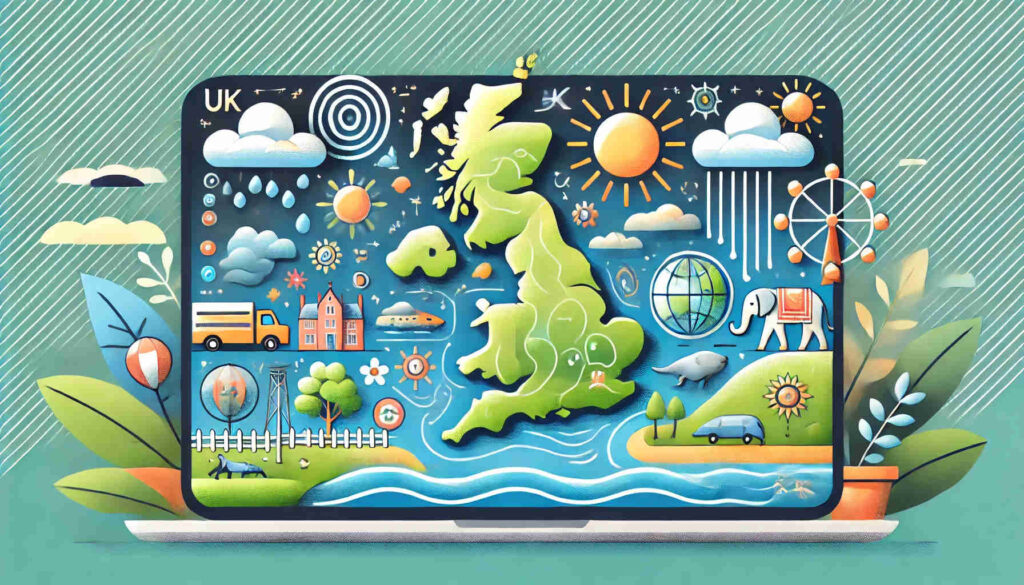Prerequisites
- Age: 5-7 years old
What is included
- 40 live lessons
- 6-10 students in a class
- End of topic assessment
- Personalised feedback
- Homework and recommended exercise
Course details
1 . Our Country – UK
Students learn the names and locations of the for Countries of the UK. The geographical features and cultures of these countries are explored. It would also include Identifying the UK on a world map or globe, understanding its position relative to other countries, especially those in Europe, and Identifying the seas around the UK.
2 . Weather
Observing and understanding how the weather changes throughout the year, with a focus on key seasonal differences (e.g., spring, summer, autumn, winter). This includes looking at temperature, rainfall, and the effects of seasons on both human activities and the physical environment.
3 . Beside the Seaside
It introduces students to coastal environments, focusing on both physical and human geography. Students learn about key seaside features such as beaches, cliffs, and piers, and explore how people interact with these areas through tourism, jobs, and activities. They compare seaside locations within the UK, observe weather patterns, and investigate the impact of human activity on coastal ecosystems.
4 . Sensational Safari
It explores the diverse wildlife and landscapes of Africa, focusing on the animals, habitats, and environments found in safari regions. Students learn about iconic animals like lions, elephants, and giraffes, as well as the physical features of Africa, such as the savannah, deserts, and rainforests. They develop an understanding of animal adaptations and the importance of conservation, while also comparing African habitats to those in the UK.
5 . Around the World
This unit takes students on a journey around the world, exploring famous landmarks and cultures from different countries. Students learn about key geographical features, such as mountains, rivers, and cities, and how people interact with these landmarks. The unit encourages an understanding of global diversity, teaching about different climates, traditions, and human-made structures like the Eiffel Tower and the Great Wall of China. Activities include map reading, investigating cultural practices, and creating projects about famous global landmarks.











